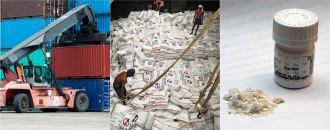
Value chains have altered global trade: Yes Bank
The Dollar Business Bureau
Yes Bank on Monday released its second report on India's structural trade dynamics which underscored that value chains have changed the face of global trade in recent times.
Cross country inter-linkages have increased much more than the growth in volume trade. It has allowed developing and emerging economies to integrate with global markets.
Trade has seen amazing growth with production being outsourced, driven by the economic rationale of comparative advantage with benefits of cost reduction and productivity enhancement.
From this global perspective, India’s share in global export of intermediates at less than 2% (as of 2014) indicates its limited integration in global value chains. However, India trades the most with its global peers in intermediates. As such, it becomes interesting to examine the nature of India’s intermediate exports and the extent of integration into global value chains, Yes Bank said in its report.
Intermediate exports’ share of India has surged from about 34% in early 1980s to 60% till date.Among the sectors, we find that natural resource related sectors of ‘Oil and coal’; ‘Stone, clay, glass and concrete products’, ‘Iron, steel and non-ferrous’ exports about 85-99% of products as intermediates, the report said.
For some sectors related to machinery including general and electrical, intermediate exports’ shares are greater than the shares of their final goods, ranging from 55% to 60%, while chemical industry ships around 70% of its overall exports as intermediates.
In terms of development of exports of intermediate; general machinery, electric machinery and transport equipment have been improving their share. But these three sectors’ contribution to India’s intermediate exports remains unimportant at or below 5%.
In order to become a meaningful player in global value chains, India may gain its comparative advantage of riding on some of its key strengths, such as skilled manpower, low labor costs and abundant raw materials.





